
The president finally had his call with Xi Jinping, and a meeting is set today to hash things out with top officials in London.
Last week President Trump finally had the phone call with Xi Jinping that he was reportedly “obsessed” with arranging. Today Trump’s top trade, treasury, and commerce officials are set to meet a Chinese delegation led by Vice Premier He Lifeng at an undisclosed location in London for talks.
This followed a week of Trump suggesting he would blow up the crucial relationship with China that was only recently steadied after an alarming month of spiraling economic warfare. That began when, without advance warning, Trump posted that China “HAS TOTALLY VIOLATED ITS AGREEMENT WITH US.” Then at 2am the day before the call, he wrote that Xi is “VERY TOUGH, AND EXTREMELY HARD TO MAKE A DEAL WITH!!!”

Trump’s readout of his call with Xi was very optimistic, suggesting progress resolving recent disputes and promising another meeting of trade negotiators on both sides as well as a future trip to China. The Chinese readout, in contrast, indicated that the basic impasse in trade talks was unresolved, but also spoke encouragingly about reviving talks.
What to make of this commotion? Are we on the verge of a diplomatic breakthrough or on the brink of the runaway great power crisis that seemed almost inevitable a few weeks ago? As so often with Trump, either of both extremes is a real possibility.
Trump is more open to genuine dealmaking with China than Biden and has shown himself willing to back down when necessary. The Chinese behavior that Trump is denouncing seems to be a response to discrete U.S. actions that could be reversed. The rapid accumulation of aggressive anti-China measures in recent weeks might be driven more by Trump’s search for leverage in negotiations than an unalterable commitment to confrontation.
Yet the world’s two most powerful countries are playing with fire. Almost a decade of intense mutual antagonism has significantly exacerbated the zero-sum global pressures that fractured the relationship in the first place. Both sides have assiduously built the institutional and ideological infrastructure to sustain great power violence.
The key question is whether Trump can pivot away from his domineering negotiating style and either pursue the substantive possibilities that China has already suggested or offer a different agenda. If not, the multiplying flashpoints in both economic and military realms might soon send the U.S. and China over the brink.

In April, Trump risked such a permanent rupture with China when he transformed his “liberation day” trade war against the whole world into a tariff assault focused on China. With tariff rates on both sides soaring past 100 percent, economic relations between the world’s two largest economies were effectively severed overnight. The Trump administration’s aim of imposing exclusionary measures against China on third countries dramatically compounded the sense of siege on the Chinese side.
Weeks of bickering followed, in which Trump repeatedly insisted that Xi wanted to de-escalate but would have to call him first. He intimated that China had already reached out at lower levels, but China consistently replied that no such communications were underway. World financial markets reeled, and global trade flows were thrown into disarray.
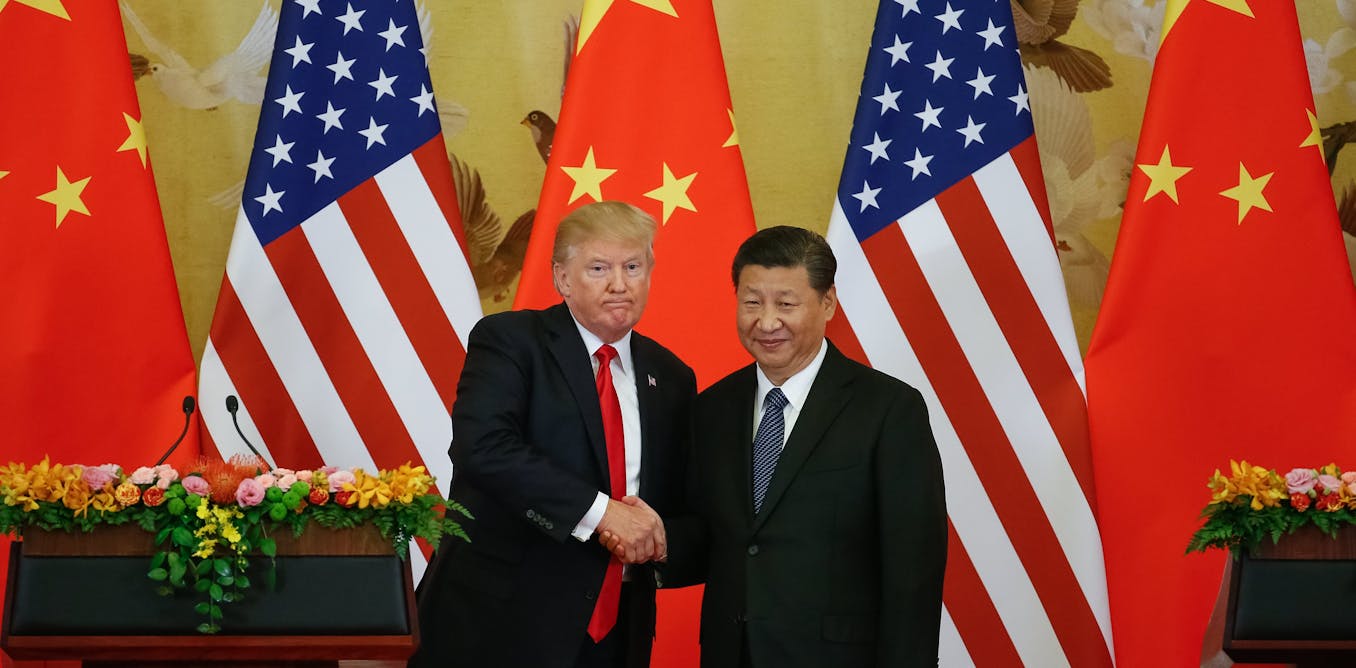
Despite the truculent personalities on both sides, the two countries somehow found their way to a graceful exit from this impasse. On May 12, Treasury Secretary Scott Bessent and Trade Representative Jamieson Greer met with Xi’s top economic official He Lifeng in Geneva for extended discussions. Their breakthrough agreement went further than observers had expected, temporarily reversing the tariff onslaught and restoring the situation prior to liberation day except for an added 10 percent rate on both sides. Notably, that 10 percent increase is in line with Trump’s minimum increase on all countries, so it does not single out China.
The agreement included two crucial additional provisions. The United States agreed to a structure for negotiations, which China had been seeking for months. China agreed to allow exports of rare earth elements it had blocked in its retaliatory measures, alarming top U.S. officials.
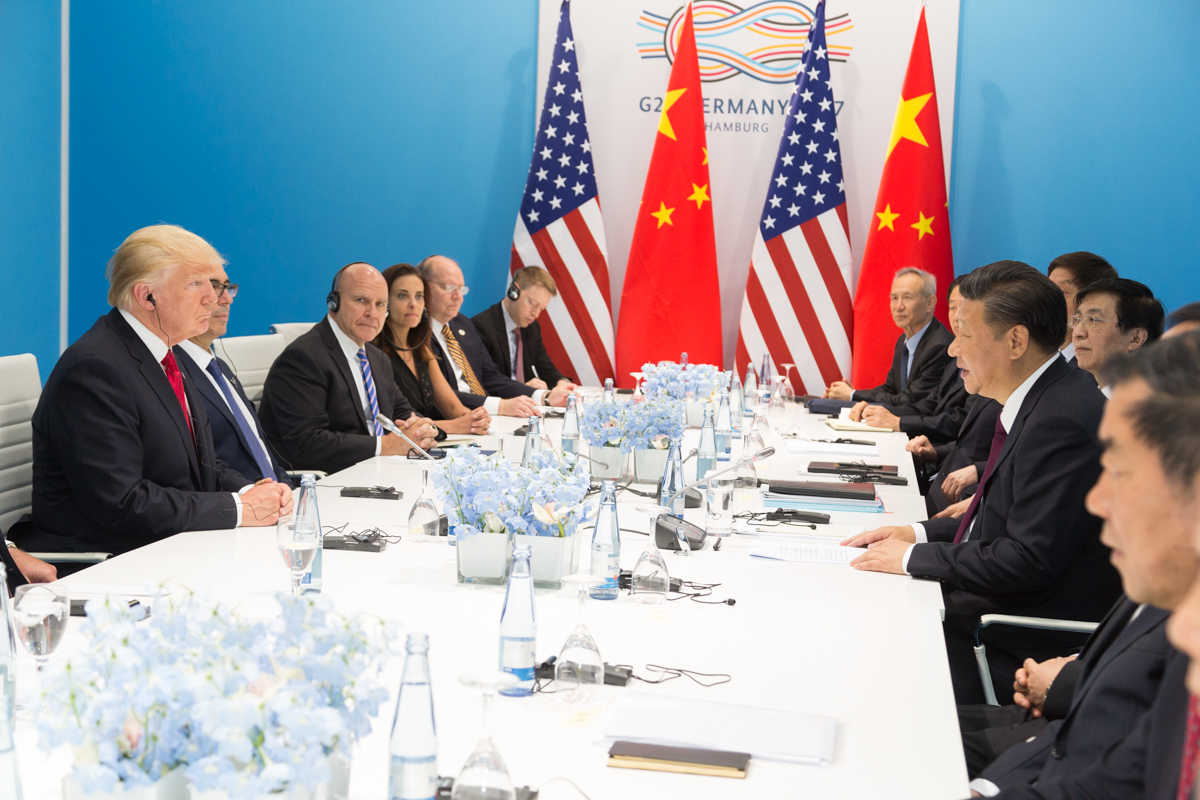
The surprise truce of May 12 seemed to create a path to lowering tensions and perhaps even to a meaningful diplomatic agreement. May 13 derailed those hopes.
That day, Trump’s Commerce Department issued new guidance, warning that anyone using Huawei-designed advanced semiconductors anywhere was likely in violation of U.S. export controls and thereby risking “substantial criminal and administrative penalties, up to and including imprisonment, fines, loss of export privileges, or other restrictions.”
This guidance makes use of the Biden administration’s blockade on advanced computing technology, but creatively turns export restrictions into an offensive weapon in the arsenal of economic warfare. Seeking to sow panic in Huawei customers in order to strangle demand for the company’s products, it builds on previous measures under Trump 1 and Biden aimed at felling China’s most successful multinational company.
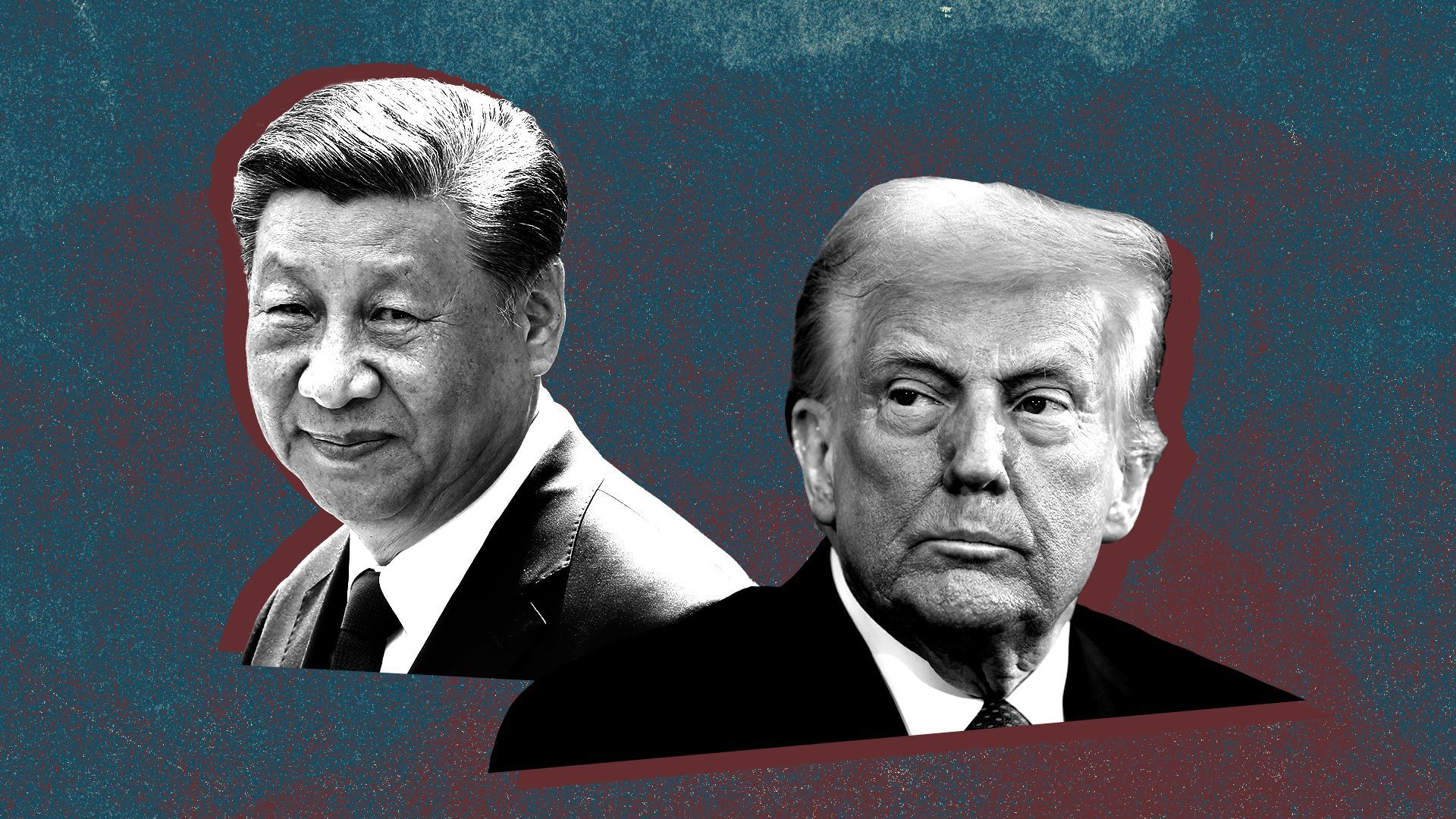
Commerce has issued a host of additional new restrictions on China’s access to technology since Trump’s inauguration, including a significant expansion of Chinese companies restricted by the department’s Entity List, a cutoff of previously permitted computer chips used in China’s AI sector, and bans on the sale of products and technology used by China’s aircraft and computer chip companies.
Such measures represent continuity with the Biden administration’s progressively expanding campaign to keep China in a position of permanent technological subordination. But the Trump administration is also opening new fronts against China. Most prominently, Secretary of State Marco Rubio announced last week that the administration will “aggressively revoke visas for Chinese students,” embracing the conspiracy theory that Chinese people are a national security threat by virtue of their nationality.
How should we interpret these moves? On the one hand, the possibility of the Trump administration breaking permanently with China is all too real. Vilification of China provides common ground in an otherwise fractious Republican Party and specifically among the key personnel in the Trump administration. Whatever their motivating aim — be it domestic reindustrialization, reducing the trade deficit, establishing “independent” supply chains, preserving corporate profits, damaging elite universities, dominating the Western Hemisphere, focusing American geopolitical power on Asia, or seeking “social solidarity” by driving foreign elements out of the U.S. — China exclusion is an organizing principle and policy goal.
On the other hand, one of Trump’s most consistent patterns is to pile on negotiating pressure by attacking his counterpart’s most sensitive concerns. He has shown himself willing to reverse course on such measures — even when his advisers might argue for more confrontation — in order to strike a bargain. And there is some reason to interpret recent anti-China moves in this light.

For example, the Commerce Department’s plan to ban Nvidia’s H20 chip was reportedly put on hold after company CEO Jensen Huang paid $1 million to attend a dinner with Trump. On the day Trump postponed liberation day and directed all his aggression against China, Nvidia was informed that the ban would go forward after all.
Likewise, the plan to expel Chinese students was announced hastily, apparently without any operational preparation — just as Trump’s frustrations about rare earths and Xi’s failure to call him were reaching the breaking point. In his call with Xi and in subsequent comments, Trump spoke positively about Chinese students in the U.S.
Now that China has discovered what a potent source of leverage its rare earths restrictions are, it is unlikely to cede the issue unless Trump reins in his Commerce Department’s aggressive moves. Yet even if the U.S. makes such a concession, other threats to diplomacy loom over the relationship. U.S. moves to cut China off from its economic partners and the Pentagon’s confrontational posture in Asia are particularly ominous.
Coupled with Trump’s predilection for using negotiations to display his own dominance — guaranteed to drive China away — the conditions for stable great power relations are dark. But if Trump were to insist that his hawkish advisers direct their energies into driving a hard bargain rather than driving the two countries toward open conflict, the U.S. and China might yet move off the path of mutually destructive hostility.
Trump miscalculated on China. Now the administration is trying to fix the mess.
The two nations have a chance for a reset. But both must recognize they remain mutually dependent.

President Donald Trump started his worldwide trade war with what appeared to be a strong hand. China’s economy, in particular, seemed vulnerable as it struggled through a real estate crisis and governmental mismanagement. Beijing would have to deal on terms favorable to the United States.
U.S.-China trade talks this week, however, confirmed this was a miscalculation. Though Trump hailed the results of the summit, held in London, as a new trade deal, the terms largely echoed those of a U.S.-China agreement made in Geneva last month, the implementation of which China had slow-walked. Beijing’s capacity to force economic pain on its people is hardly unlimited; popular outcry over strict pandemic-era restrictions eventually forced the government to relax them. But “eventually” is the key word. Ending the suffering will now require serious dealing on both sides.

After weeks of impasse, the latest talks signaled that the United States and China understand that the economic pain must indeed end. The talks succeeded, if only modestly, because Washington and Beijing decided to put aside the acrimony and recognize that the world’s two largest economies remain mutually dependent.
Though a long-term deal will take more intense negotiations, the two sides promised to remove some recently imposed export controls. China had restricted the export of rare-earth minerals and magnets — vital for electric vehicle batteries, smartphones, U.S. military hardware and other critical applications. Since China accounts for more than 70 percent of the world’s rare-earth mining, and 90 percent of the materials’ processing, the cumbersome export rules had caused uncertainty in American supply chains. The Trump administration believed China agreed to relax them after the Geneva truce on May 12. But China, which views rare earths as a strategic asset, placed new export requirements on domestic companies processing the minerals. The new deal supposedly allows for more exports of rare earths to the U.S. — although, as with everything in China, proof will come later.
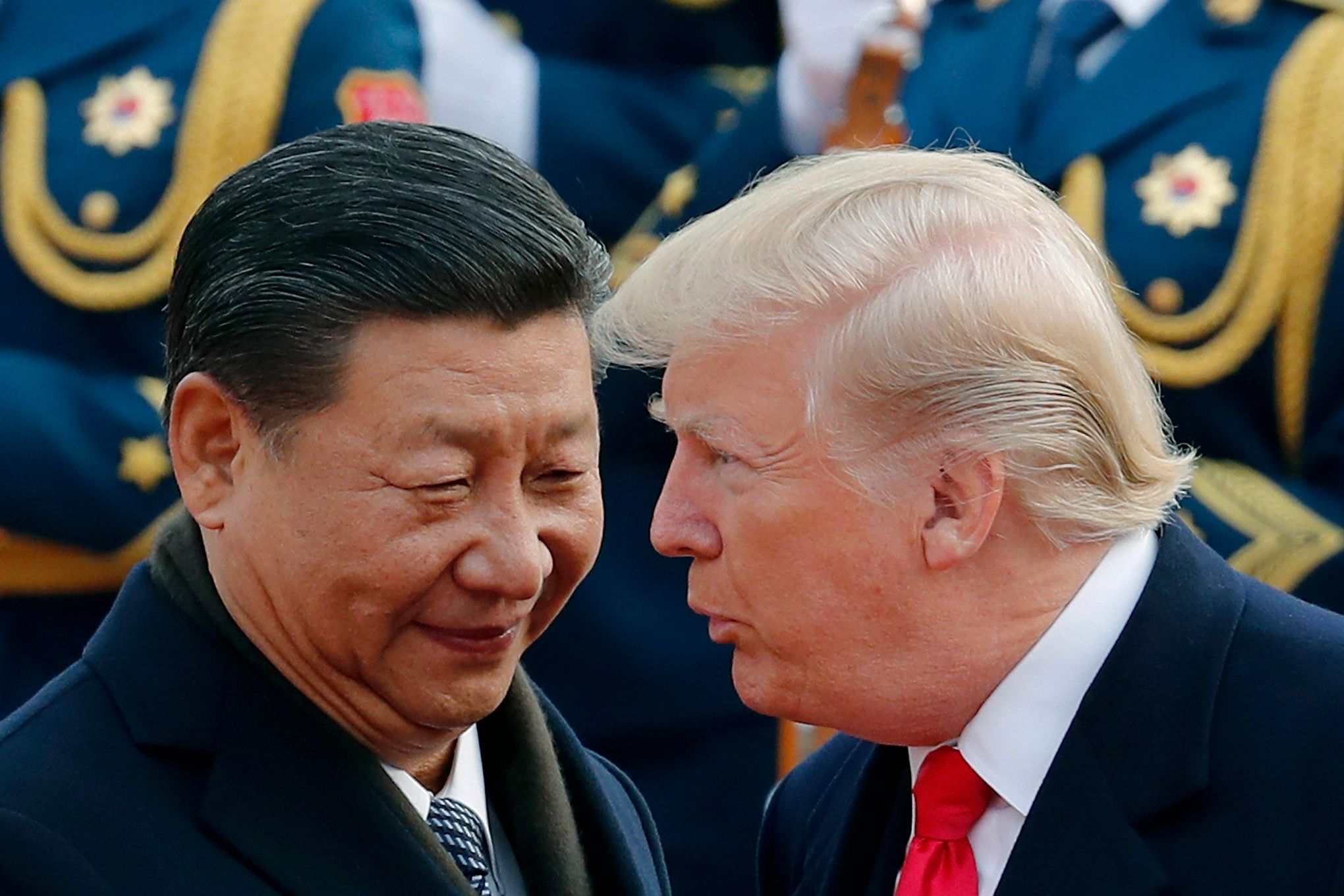
The U.S. imposed its own set of export restrictions on China, including a ban on American companies from using artificial intelligence chips produced by a Chinese company, Huawei, and limitations on the sale of chip design software used in semiconductors. Secretary of State Marco Rubio also vowed to “aggressively revoke” visas of Chinese students in certain fields. According to the latest deal, Washington will roll back those restrictions.
Trump had earlier said China was “doing very poorly right now” and “factories are closing all over China because we’re not taking their product.” Indeed, China even before Trump’s tariff war was suffering from a real estate crisis, growing debt fears, widespread youth unemployment and lower growth projections. But Trump’s tariffs also caused a surge in Chinese nationalism and a sentiment that the country will not be bullied by the U.S.
Beijing has also done a better job than the Trump administration at shoring up relations with other major trading partners. After Trump announced his first round of “Liberation Day” tariffs, Chinese President Xi Jinping visited Southeast Asia, assuring Vietnam, Cambodia and Malaysia that China remained a reliable partner and emphasizing his vision of common prosperity in the “Asian family.”
China also tried shoring up its ties with Europe, which the Trump administration has alienated with high tariffs, a new pro-Russian tilt and hectoring about the free-speech rights of anti-immigrant populist parties. China is reportedly close to finalizing a deal to purchase up to 500 Airbus planes, which could be announced when European leaders travel to Beijing for a summit next month. Without Trump’s trade war, China might have split that order between Airbus and Boeing.
Meanwhile, Beijing watched as Trump backed down from his initial global tariffs, announcing a 90-day pause in the face of a potential U.S. bond market meltdown. Xi, largely a one-man dictator in a tightly controlled system, has far fewer domestic pressures to worry about even in a crippling trade war.
Trump seems intent on decoupling America’s economy from China’s. He has talked about returning manufacturing to the U.S., and his trade negotiators have tried to pressure countries such as Vietnam to remove China from their supply chains. But decoupling won’t be easy, if it can be done at all.
For decades, American companies flocked to China, initially as the world’s cheap factory. But as that label passed on to cheaper locales, China has become the go-to place for skilled labor. U.S. and Chinese supply chains have become so intertwined that economists in the mid-2000s coined the term “Chimerica.” If anything, China has been reducing its dependence on America; it lowered its holding of U.S. Treasury securities from $1.3 trillion in 2011 to $759 billion last year.
The U.S. started off with the economic upper hand, thanks to low unemployment, falling inflation and a strong global network of alliances. But if these were the cards — one of Trump’s favored metaphors — the U.S. overplayed them with China. Allies are now treated as adversaries. The markets are volatile because of uncertainty. Recession fears loom. The World Bank on Tuesday warned that global economic growth would slow sharply this year because of Trump’s trade war.
The talks this week set things on a better course. Now, the administration must play its cards right.
Trump’s hand against Beijing is getting weaker as Chinese exports to the U.S. tank 34% year over year

When President Trump announced his tariff regime, he said China would have to “absorb” the increases to export prices and would be forced to the negotiating table to agree to new trading terms.
After all, he reasoned, China is reliant on the U.S. as its greatest export market and would have to reshape its entire economy if it didn’t agree to a deal.
So, despite wanting to rebalance trade with economic partners, Trump’s strong hand relied somewhat on the notion that Chinese businesses needed to keep selling to U.S. companies and consumers.
But as negotiations rumble on and evolve, that foundation has shifted. Data released Monday reveals Chinese exports to the U.S. fell by more than 34% in May 2025 when compared year on year.
Exports to the U.S. also dropped a little over 20% in April, signaling a conscious shift away from the reliable U.S. consumer toward other markets.

These new pockets of potential for Chinese exporters include Africa, where exports were up more than 30% in May year over year, and Canada, where exports are up 20% in May compared with the same month last year, per analysis from FX and international payments specialists Convera.
The diversification away from the U.S. for Chinese exporters could be interpreted as undermining Trump’s seat at the negotiating table in Beijing, said Convera’s lead FX and macro strategist, George Vessey.
He tells Fortune: “I think the data may be seen as undermining Trump’s position and ability to hurt China. Still, given the disinflationary impact this is expected to have on other countries, it raises the risk of the trade war escalating elsewhere with other countries forced to impose their own tariffs on China.
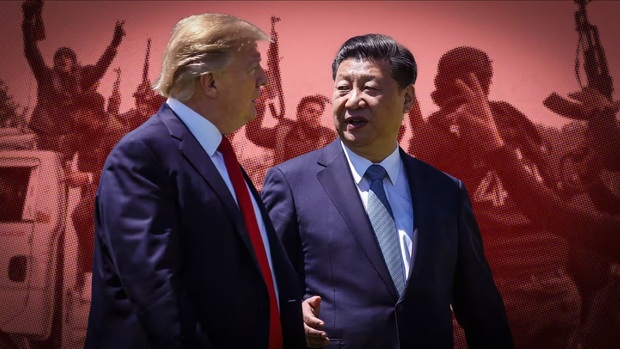
“There was already growing evidence that China is successfully diversifying its trade relations, becoming less dependent on the U.S. as the destination of its manufactured goods. The share of the U.S. in overall Chinese exports has fallen from around 23% at the beginning of the century to 16%.”
He also provided a caveat to the data, saying: “It’s worth noting that Chinese exports to the U.S. always fall around the Chinese New Year (generally February) but usually rebound strongly by now. This year, the post–Chinese New Year rebound simply hasn’t happened. Although there was a surge in U.S. imports in Q1, nearly all came from Europe rather than from China.”
Reestablishing truce
The data may have come at a convenient time for Chinese officials, who are meeting with Trump aides to discuss a deal in London.
To recap, currently the tit-for-tat trade war between Beijing and Washington, D.C., has entered something of a truce, with Treasury Secretary Scott Bessent announcing a 90-day pause in May.
Both sides agreed to lower their rates by 115%, meaning Bejing faces a 30% tariff and the U.S. faces a 10% tariff.
As officials met in the U.K. this week, analysts had hoped for some further evidence about what an eventual deal would look like.
Instead, they received a reiteration of the truce already announced and a framework with little detail about future proceedings.
President Trump said that a deal was “done,” pending sign-off from President Xi. Rare earth magnets would be “upfront” in the agreement, he added, leading some to speculate that the U.S. had agreed to commitments such as letting Chinese students into its universities.
As Deutsche Bank’s Jim Reid wrote in a note sent to Fortune this morning: “Overall, this left a sense that the two sides had reestablished the trade truce that was signaled in Geneva last month, but with the path forward towards any genuine trade normalization still unclear.”
Vessey chimes: “Trade talks between major economies remain pivotal, shaping inflation and global market dynamics. We’ve heard some positive developments over the past week, but until there’s more clarity, investor sentiment may pivot back to macro drivers.”






:max_bytes(150000):strip_icc():focal(693x393:695x395)/Melania-Trump-Barron-Trump-nyu-121124-01-f0c5e2b4d8ac409aa8eed74cc986efae.jpg?w=1200&resize=1200,0&ssl=1)
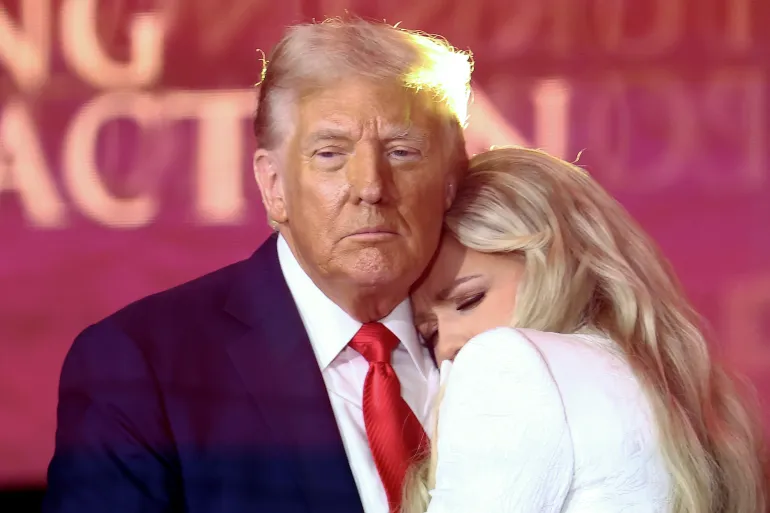
















:max_bytes(150000):strip_icc():focal(740x228:742x230)/Virginia-Giuffre-Robert-Giuffre-070225-6b5b9d649909431bb1dcec44c1fadfa2.jpg?w=1200&resize=1200,0&ssl=1)









:max_bytes(150000):strip_icc():focal(750x292:752x294):format(webp)/king-charles-prince-andrew-120125-1a-f46e7b16049c47358276e6a71d8ccd14.jpg?w=1200&resize=1200,0&ssl=1)







:max_bytes(150000):strip_icc():focal(734x384:736x386)/Donald-Trump-Tim-Walz-112825-2ecc0b4502ac4a0e95f57085b0cd8afe.jpg?w=1200&resize=1200,0&ssl=1)


:max_bytes(150000):strip_icc():focal(760x440:762x442)/ellen-degeneres-portia-de-rossi-the-unveiling-of-rh-san-francisco-the-gallery-032025-1-5c12c2f292b4446bb3b9009647b426bf.jpg?w=1200&resize=1200,0&ssl=1)